Charles M. Kozierok The TCP-IP Guide
Подождите немного. Документ загружается.

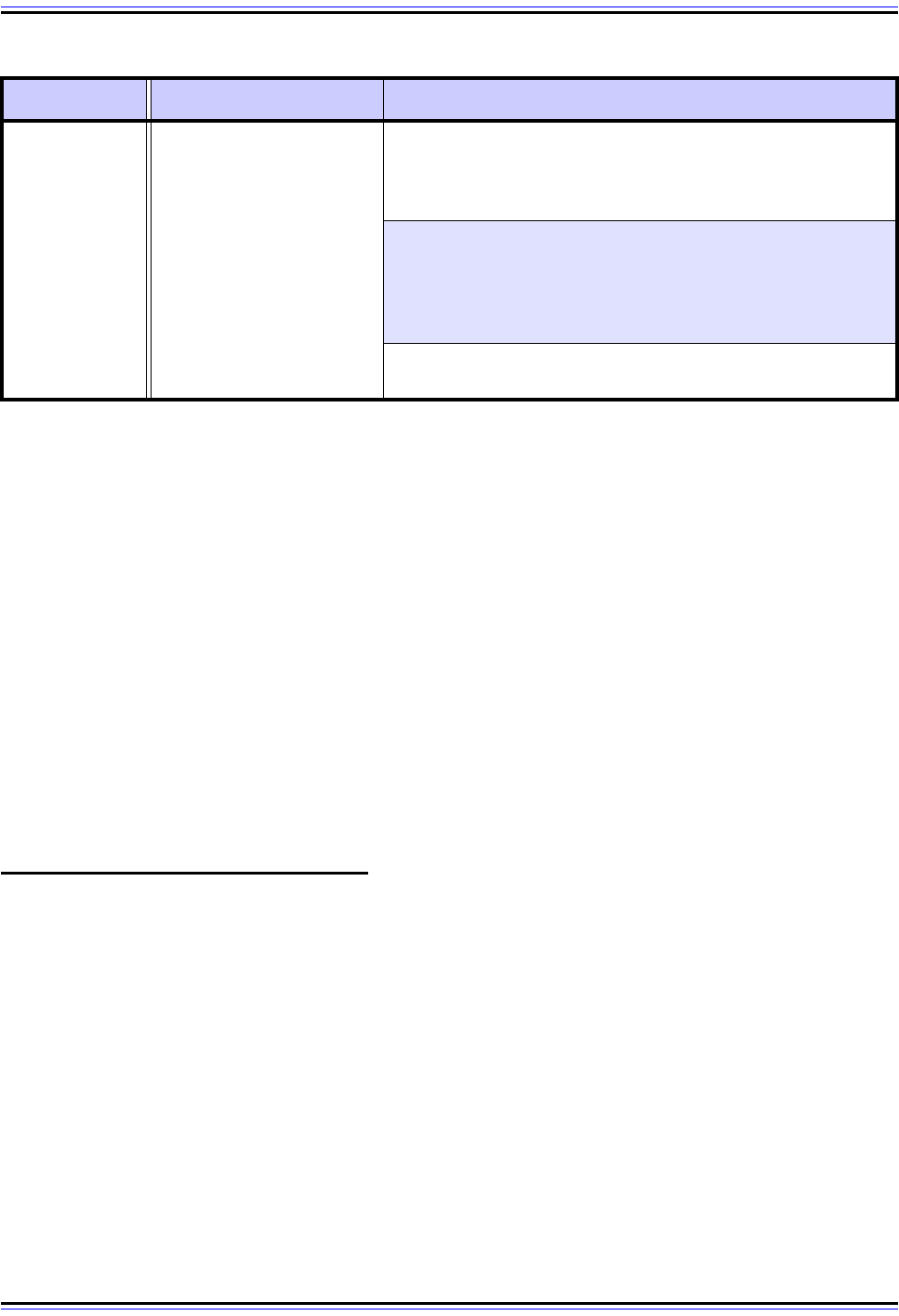
The TCP/IP Guide - Version 3.0 (Contents) ` 1151 _ © 2001-2005 Charles M. Kozierok. All Rights Reserved.
This is just a summary of the finite state machine, and does not show every possible event
and transition, since it is complex enough already. For example, if a client that received two
offers in the SELECTING state receives a DHCPNAK from its chosen server in the
REQUESTING state, it may choose to send a new DHCPREQUEST to its “second choice”
instead of starting over from scratch. Also, the client must have logic that lets it “time out” if
it receives no reply to sent messages in various states, such as not receiving any offers in
the SELECTING state. The next few topics discuss these matters in more detail.
Note also that the DHCP standard does not describe the DHCP server's behavior in the
form of a finite state machine, only the client's. Here too, there is more information on what
exactly DHCP servers do in the pages that follow.
I should also point out explicitly that this finite state machine applies to dynamically-
allocated clients; that is, ones with conventional leases. A device configured using
“automatic” allocation will go through the same basic allocation process, but does not need
to renew its lease. The process for manual allocation is somewhat different.
DHCP Lease Allocation Process
To implement DHCP, an administrator must first set up a DHCP server and provide it with
configuration parameters and policy information: IP address ranges, lease length specifica-
tions, and configuration data that DHCP hosts will need to be delivered to them. Host
devices can then have their DHCP client software enabled, but nothing will happen until the
client initiates communication with the server. When a DHCP client starts up for the first
time, or when it has no current DHCP lease, it will be in an initial state where it doesn't have
an address and needs to acquire one. It will do so by initiating the process of lease
allocation.
Notes on Lease Communication Descriptions
Before I begin, some notes about this description, which also apply to subsequent topics in
this section on DHCP lease communications:
REBINDING
The client has failed to
renew its lease with the
server that originally
granted it, and now seeks
a lease extension with any
server that can hear it. It
periodically sends
DHCPREQUEST
messages with no server
specified until it gets a
reply or the lease ends.
Client Receives DHCPACK: Some server on the network
has renewed the client's lease. The client binds to the new
server granting the lease, restarts the T1 and T2 timers, and
returns to the BOUND state.
Client Receives DHCPNAK: A server on the network is
specifically telling the client it needs to restart the leasing
process. This may be the case if a new server is willing to
grant the client a lease, but only with terms different than the
client’s current lease. The client goes to the INIT state.
Lease Expires: The client receives no reply prior to the
expiration of the lease. It goes back to the INIT state.
Table 189: DHCP Client Finite State Machine (Page 3 of 3)
State State Description Event and Transition
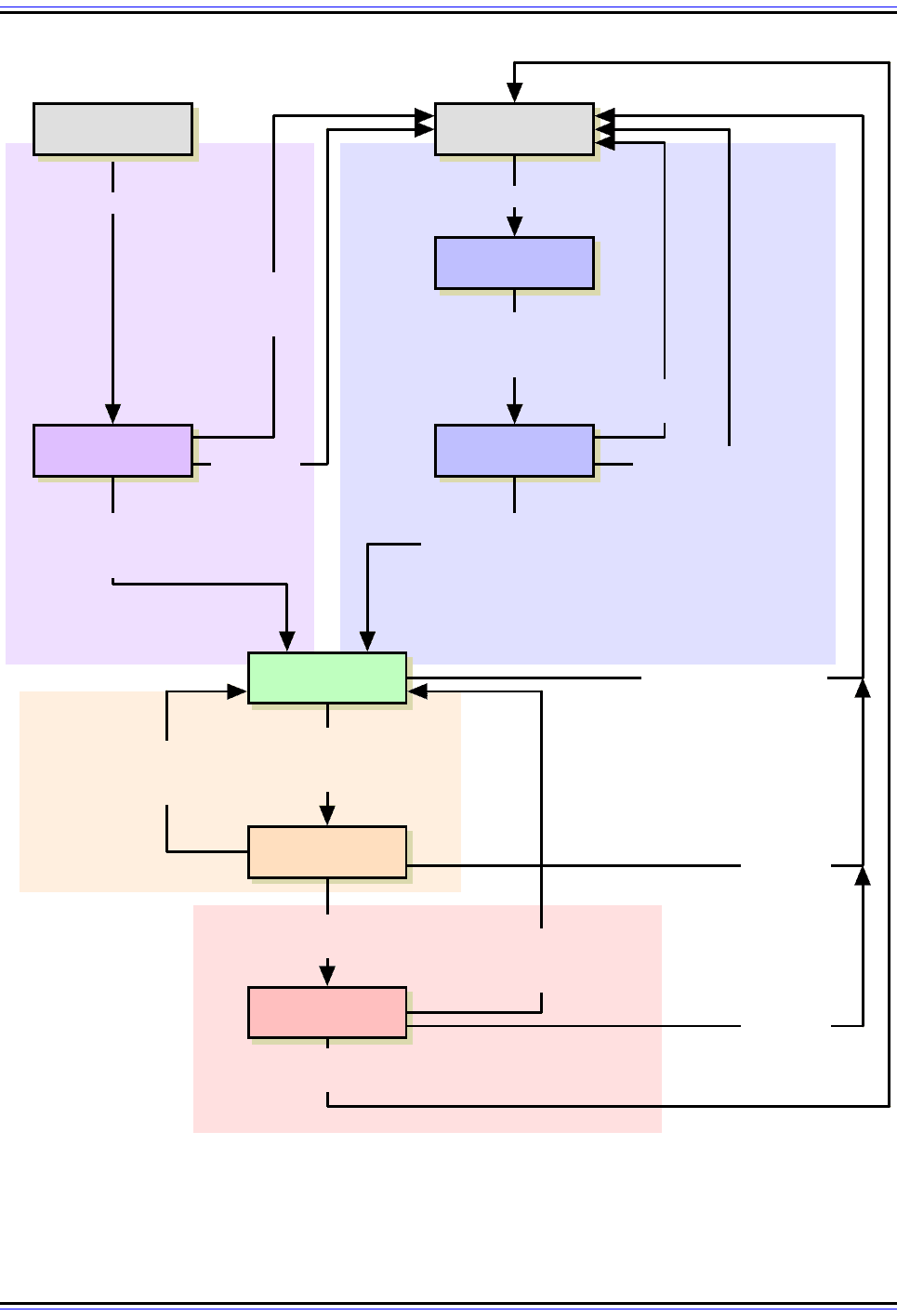
The TCP/IP Guide - Version 3.0 (Contents) ` 1152 _ © 2001-2005 Charles M. Kozierok. All Rights Reserved.
Figure 262: DHCP Client Finite State Machine
This diagram shows the finite state machine used by DHCP clients. The colored background areas show the
transitions taken by a DHCP client as it moves through the four primary DHCP processes: allocation, reallo-
cation, renewal and rebinding.
INIT
REBOOTING
SELECTING
REQUESTING
BOUND
RENEWING
REBINDING
Send DHCPDISCOVER
Receive DHCPOFFERs;
Select Offer,
Send DHCPREQUEST
Alloca tion ProcessReall ocation Process
T1 Expires;
Send DHCPREQUEST
To Current Lease Server
INIT-REBOOT
Receive DHCPACK;
IP Address Is Free;
Start Lease, Set Timers
Receive DHCPACK;
IP Address Is Taken;
Send DHCPDECLINE
Receive DHCPACK;
IP Address Is Free;
Start Lease, Set Timers
Receive DHCPACK;
IP Address Is Taken;
Send DHCPDECLINE
Receive
DHCPNAK
Terminate Lease;
Send DHCPRELEASE
Lease
Expiration
Receive DHCPACK;
Start New Lease
and SetTimers
Send DHCPREQUEST
Receive
DHCPNAK
T2 Expires;
Broadcast DHCPREQUEST
Receive
DHCPNAK
Receive
DHCPNAK
Receive DHCPACK;
Restart Lease
and Timers
Renewal Process
Rebinding Process

The TCP/IP Guide - Version 3.0 (Contents) ` 1153 _ © 2001-2005 Charles M. Kozierok. All Rights Reserved.
☯ Addressing: DHCP assumes that clients will normally broadcast messages, since
they don't know the address of servers when they initiate contact, but that servers will
send replies back unicast to the client. This can be done even before the client has an
IP address, by sending the message at the link layer. Some clients don't support this
and require that messages to them be broadcast instead. The details of how
messages are created and addressed are discussed in the section on DHCP
messaging.
☯ DHCP Message Fields and Options: DHCP uses many of the same basic fields as
BOOTP, but much of the extra information the protocol requires is carried in DHCP
options. Obviously, some of these “options” aren't really optional, despite the name—
they are needed for the basic function of DHCP. An obvious example would be the
DHCP Message Type option, which is what specifies the message type itself. Again,
you can find a full description of all DHCP fields and options in the section on DHCP
messaging.
☯ DHCP Relay Agents: I have assumed that no relay agents are in use here; see the
topic on DHCP/BOOTP relay agents for more on how they change the allocation
process (and other processes).
Lease Allocation Process Steps
Below I have described the steps that are followed by a DHCP client and server in the initial
allocation of an IP address lease. This is a basic description, and I have not included all the
details of what the client and server do, as that would make this description incredibly long.
Instead, I have focused on the most important tasks each device performs, and also
specified the message types exchanged and critical pieces of data included in each
message, as well as client states and transitions. The process is also illustrated in Figure
263.
1. Client Creates DHCPDISCOVER Message
The client begins in the INIT (initialization) state. It has no IP address and doesn't even
know whether or where a DHCP server may be on the network. To find one, it creates a
DHCPDISCOVER message, including the following information:
☯ Its own hardware address in the CHAddr field of the message, to identify itself.
☯ A random transaction identifier, put into the XID field. This is used to identify later
messages as being part of the same transaction.
☯ Optionally, the client may request a particular IP address using a Requested IP
Address DHCP option, a particular lease length using an IP Address Lease Time
option, and/or specific configuration parameters by including a Parameter Request List
option in the message.
2. Client Sends DHCPDISCOVER Message
The client broadcasts the DHCPDISCOVER message on the local network. The client
transitions to the SELECTING state, where it waits for replies to its message.
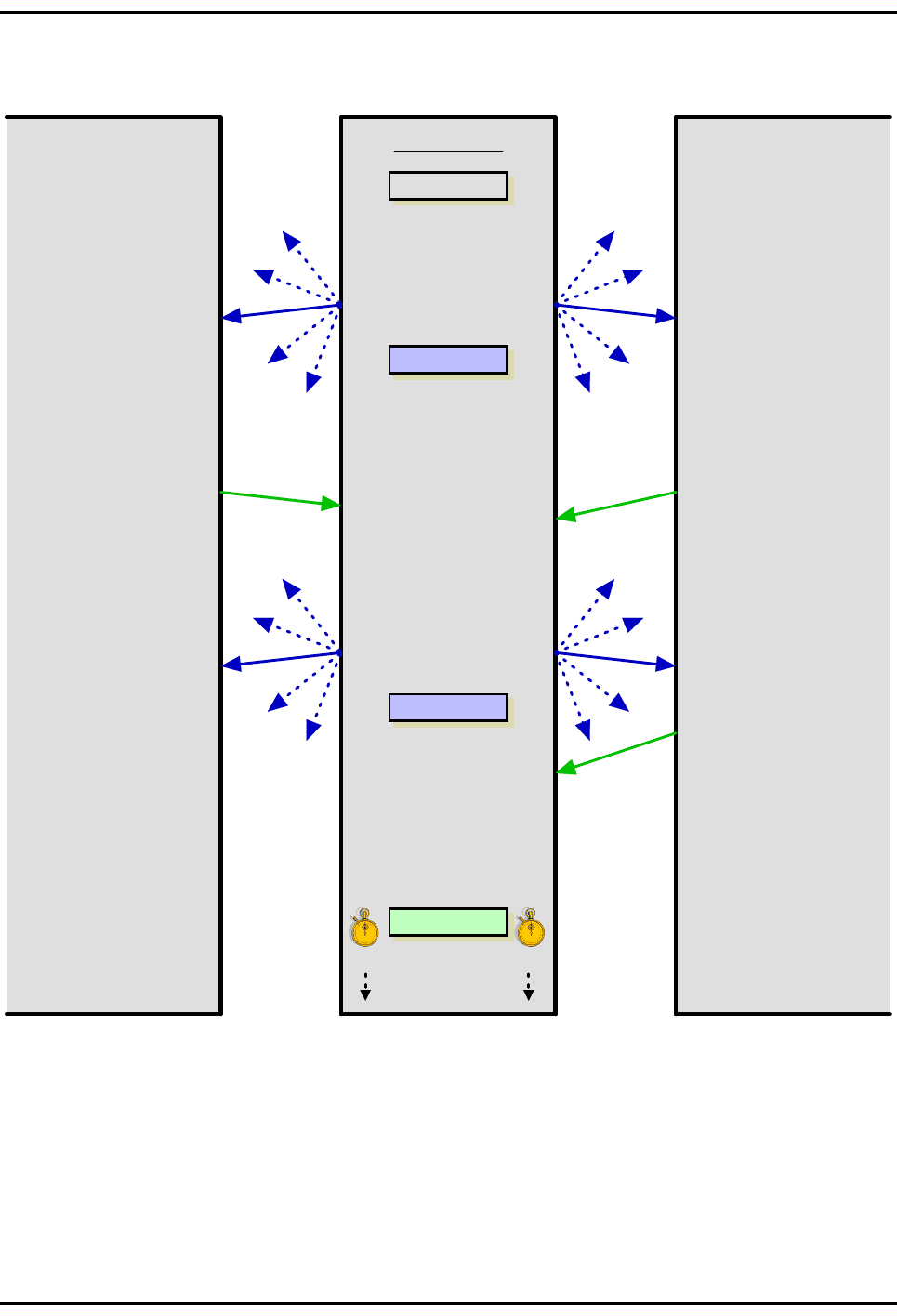
The TCP/IP Guide - Version 3.0 (Contents) ` 1154 _ © 2001-2005 Charles M. Kozierok. All Rights Reserved.
Figure 263: DHCP Lease Allocation Process
This diagram shows the steps involved in DHCP client lease allocation. This diagram is a bit different from
most of the other client/server exchange diagrams in this Guide in that I have shown two servers instead of
one. This shows how a client handles responses from multiple DHCP servers and how each servers react
differently depending on whether or not its lease offer was chosen by the client.
Server #1 Client Server #2
INIT
Client State
SELECTING
REQUEST ING
3. Process
DHCPDISCOVER Message
1. Create
DHCPDISCOVER Message
2. Broadcast
DHCPDISCOVER Message
3. Process
DHCPDISCOVER Message
4. Create
DHCPOFFER Message
4. Create
DHCPOFFER Message
5. Probe Offered Address 5. Probe Offered Address
6. Send
DHCPOFFER Message
6. Send
DHCPOFFER Message
7. Collect and Process
DHCPOFFER Messages
8. Create
DHCPREQUEST Message
9. Broadcast
DHCPREQUEST Message
10. Process
DHCPREQUEST Message
10. Process
DHCPREQUEST Message
(Server Not Selected)
11. Send
DHCPACK Message
12. Receive and Process
DHCPACK Message
13. Probe Offered Address
14. Finalize Lease Allocation
BOUND
...
T1 T2

The TCP/IP Guide - Version 3.0 (Contents) ` 1155 _ © 2001-2005 Charles M. Kozierok. All Rights Reserved.
3. Servers Receive and Process DHCPDISCOVER Message
Each DHCP server on the local network receives the client's DHCPDISCOVER message
and examines it. The server looks up the client's hardware address in its database and
determines if it is able to offer the client a lease, and what the terms of the lease will be. If
the client has made requests for a particular IP address, lease length, or other parameters,
the server will attempt to satisfy these requests, but is not required to do so. A server may
decide not to offer a lease to a particular client if it has not been programmed to provide
service for it, it has no remaining IP addresses or for other reasons.
4. Servers Create DHCPOFFER Messages
Each server that chooses to respond to the client creates a DHCPOFFER message
including the following information:
☯ The IP address to be assigned to the client, in the YIAddr field. If the server previously
had a lease for this client it will attempt to reuse the IP address it used last time. Failing
that, it will try to use the client's requested address if present; otherwise, it will select
any available address.
☯ The length of the lease being offered.
☯ Any client-specific configuration parameters either requested by the client or
programmed into the server to be returned to the client.
☯ Any general configuration parameters to be returned to all clients or clients in this
client's class.
☯ The server's identifier in the DHCP Server Identifier option.
☯ The same transaction ID (XID) used in the DHCPDISCOVER message.
5. Servers Probe And/Or Reserve Offered Address (Optional)
The DHCP standard specifies that before sending a DHCPOFFER to a client, the server
“SHOULD” check to see that the IP address isn't already in use by sending an ICMP Echo
message to that address. If the probe is made and the address is in use, the server will of
course not offer it to the client. This may be disabled by an administrator. It is considered a
key part of the DHCP server conflict detection feature.
Whether or not it probes the address offered, the server may also reserve the address so
that if the client decides to use it, it will be available. This isn't mandatory, because as we'll
see below, the protocol handles the case where an offered lease is retracted. It is more
efficient if servers do reserve addresses, but if IP addresses are in very short supply, such
reservation may not be practical.
6. Servers Send DHCPOFFER Messages
Each server sends its DHCPOFFER message. They of course may not all be sent at
exactly the same time. The messages are sent either unicast or broadcast, as mentioned
earlier.

The TCP/IP Guide - Version 3.0 (Contents) ` 1156 _ © 2001-2005 Charles M. Kozierok. All Rights Reserved.
7. Client Collects and Processes DHCPOFFER Messages
The client waits for DHCPOFFER messages to arrive in response to its DHCPDISCOVER.
The exact behavior of the client here is implementation-dependent. The client may decide
to simply take the first offer it receives, for expediency. Alternately, it may choose to “shop
around” by waiting for a period of time. It can then process each offer and take the one with
the most favorable terms—for example, the one with the longest lease.
If no DHCPOFFER messages are received, the client will enter a retransmission mode and
try sending the DHCPDISCOVER again for a period of time.
8. Client Creates DHCPREQUEST Message
The client creates a DHCPREQUEST message for the server offer it has selected. This
message serves two purposes: it tells the server whose offer the client has accepted “yes, I
accept your offer, assuming it is still available” and also tells the other servers “sorry, your
offer was rejected”. (Well, except for the “sorry” part; servers are pretty thick-skinned about
rejection. ☺) In this message, the client includes the following information:
☯ The identifier of the “chosen” server in the DHCP Server Identifier option, so everyone
knows “who won”.
☯ The IP address that the DHCP server assigned the client in the DHCPOFFER
message, which the client puts in the Requested IP Address DHCP option as a
confirmation.
☯ Any additional configuration parameters it wants in a Parameter Request List option in
the message.
9. Client Sends DHCPREQUEST Message
The client sends the DHCPREQUEST message. Since it is intended for not just the
selected DHCP server but all servers, it is broadcast. After doing this, the client transitions
to the REQUESTING state, where it waits for a reply from the chosen server.
10. Servers Receive and Process DHCPREQUEST Message
Each of the servers receives and processes the client's request message. The servers not
chosen will take the message as a rejection. However, note that a client may select one
offer, attempt to request the lease and have the transaction not complete successfully. The
client may then come back and try its “second choice” offer by sending a DHCPREQUEST
containing a different Server Identifier. This means that if Server A receives a single
DHCPREQUEST with a Server Identifier of Server B, that doesn't necessarily mean that
Server A is done with the transaction. For this reason, “rejected” servers will wait for a while
before offering a previously-offered lease to another client.
11. Server Sends DHCPACK or DHCPNAK Message
The chosen server will see that its lease has been selected. If it did not previously reserve
the IP address that was offered to the client, it must check to make sure it is still available. If
it is not, the server sends back a DHCPNAK (negative acknowledgment) message, which

The TCP/IP Guide - Version 3.0 (Contents) ` 1157 _ © 2001-2005 Charles M. Kozierok. All Rights Reserved.
essentially means “never mind, that lease is no longer available”. Usually, however, the
server will still have that lease. It will create a binding for that client, and send back a
DHCPACK (acknowledgment) message that confirms the lease and contains all the
pertinent configuration parameters for the client.
12. Client Receives and Processes DHCPACK or DHCPNAK Message
The client receives either a positive or negative acknowledgment for its request. If the
message is a DHCPNAK, the client transitions back to the INIT state and starts over: back
to square one (step #1). If it is a DHCPACK, the client reads the IP address from the YIAddr
field, and records the lease length and other parameters from the various message fields
and DHCP options.
If the client receives neither message, it may retransmit the DHCPREQUEST message one
or more times. If it continues to hear nothing then it must conclude that the server flaked out
and go back to step #1.
13. Client Checks That Address Is Not In Use
The client device should perform a final check to ensure that the new address isn't already
in use before it concludes the leasing process. This is typically done by generating an
Address Resolution Protocol (ARP) request on the local network, to see if any other device
thinks it already has the IP address this client was just leased. If another device responds,
the client sends a DHCPDECLINE message back to the server, which basically means “hey
server, you screwed up, someone's already using that address”. The client then, you
guessed it, goes back to step #1 and starts over.
14. Client Finalizes Lease Allocation
Assuming that the address is not already in use, the client finalizes the lease and transitions
to the BOUND state. It also sets its two lease timers, T1 and T2. It is now ready for normal
operation.
Dealing With Lost Messages or Failure of the Allocation Process
You can see in this description that there are a number of situations that may occur that
require a client to retransmit messages. This is because DHCP uses UDP which is
unreliable and can cause messages to be lost. If retransmissions don't fix a problem such
as not receiving a DHCPOFFER or a DHCPACK from a server, the client may have to start
the allocation process over from scratch. The client must include enough “intelligence” to
prevent it from simply trying forever to get a lease when there may not be a point—for
example, if there are no DHCP servers on the network, no number of retransmissions will
help.
Thus, after a number of retries the client will give up and the allocation process will fail. If
the client is configured to use the Automatic Private IP Addressing feature, this is where it
would be used to give the client a default address. Otherwise, the client will be, well, “dead
in the water”.
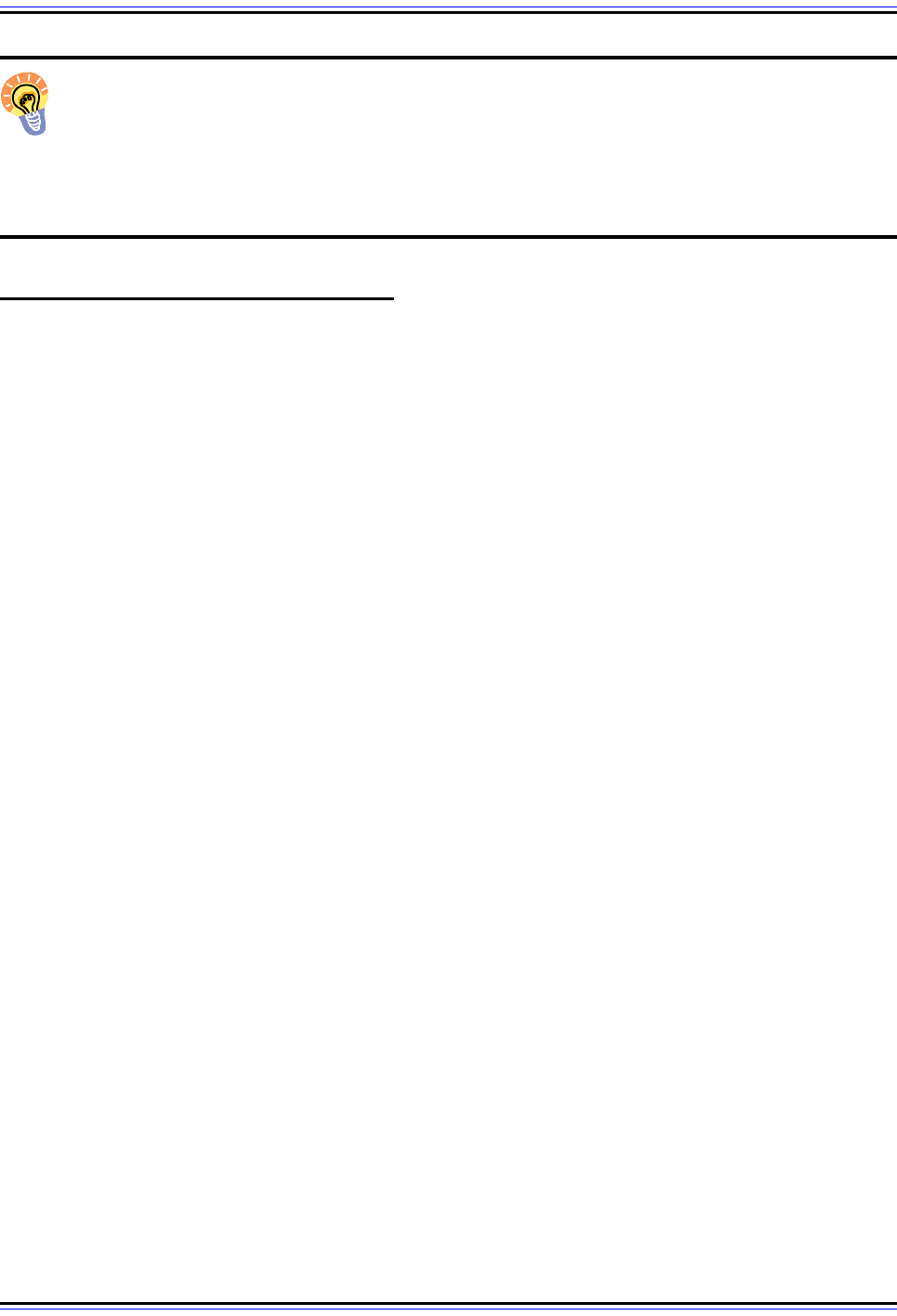
The TCP/IP Guide - Version 3.0 (Contents) ` 1158 _ © 2001-2005 Charles M. Kozierok. All Rights Reserved.
Key Concept: The most important configuration process in DHCP is the lease
allocation process, used by clients to acquire a lease. The client broadcasts a
request to determine if any DHCP servers can hear it. Each DHCP server that is
willing to grant the client a lease sends it an offer. The client selects the lease it prefers and
sends a response to all servers telling them its choice. The selected server then sends the
client its lease information.
DHCP Lease Reallocation Process
When a DHCP client starts up for the first time and has no lease, it begins in the INIT
(initialize) state and goes through the allocation process described in the preceding topic to
acquire a lease. The same process is used when a lease ends, if a lease renewal fails, or
some error or other happening causes a client to need a new lease.
Situations Where Reallocation Is Performed
There are certain situations in which a client starts up while it still has a lease already in
place. In this situation, the client does not need to go through the entire process of getting
an IP address allocation and a new lease setup. Instead, it simply tries to re-establish its
existing lease, through a process that I call reallocation.
There are two primary circumstances under which a client performs reallocation rather than
allocation:
☯ Power On With Existing Lease: The length of time that a client lease lasts can range
from minutes to years; it is entirely a matter of the lease length policy set for the
network and client by the administrator. Many, if not most client machines are not left
connected to the network 24 hours a day; they are turned on during the day and then
shut down at night, and also shut down on weekends. A client with a very short lease
that is shut down and then later started again will probably find that its lease has
expired, and will have to get a new one. However, if a lease is longer than a few days,
it will still probably be in effect when the client starts up again.
☯ Reboot: Clients are also sometimes rebooted, to install new software or correct a
problem. In this case even when the lease length is very short, the restarting client will
still have a valid lease when it starts up.
Lease Reallocation Process Steps
The reallocation process is essentially an abbreviated version of the allocation process
described in the previous topic. There is no need for the client to go through the whole
“yoohoo, any servers out there want to give me a lease” routine. Instead, the client attempts
to find the server that gave it the lease in the first place, seeking a confirmation that the
lease is still valid and that it may resume using its previously-allocated IP address. It also
receives confirmation of the parameters it should use.
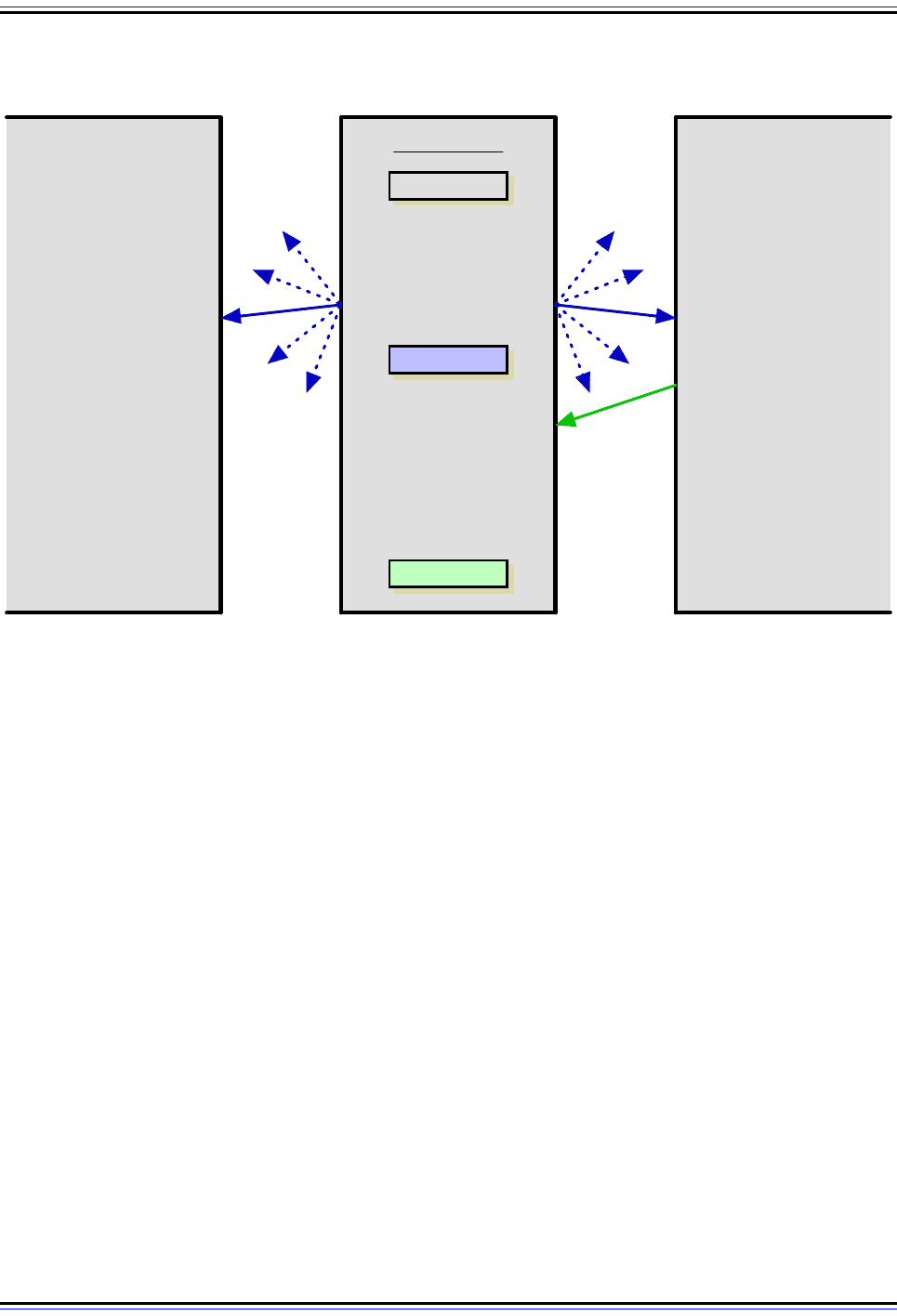
The TCP/IP Guide - Version 3.0 (Contents) ` 1159 _ © 2001-2005 Charles M. Kozierok. All Rights Reserved.
The following steps summarize the reallocation process, which is also shown in Figure 264.
(Note that the same notes about addressing fields, relay agents and such that I mentioned
in the discussion of lease allocation apply here as well):
1. Client Creates DHCPREQUEST Message
The client begins in the INIT-REBOOT state instead of the INIT state. It creates a DHCPRE-
QUEST message to attempt to find a server with information about its current lease. Note
that this may or may not be the server that originally granted the lease; the server respon-
sible for a lease could, theoretically, have changed in the time since the client obtained the
lease. Thus, unlike the DHCPREQUEST message in step #8 in the allocation process, the
client does not include a DHCP Server Identifier option. It does includes the following
information:
☯ Its own hardware address in the CHAddr field of the message, to identify itself.
☯ The IP address of its existing lease, in the Requested IP Address DHCP option. Note
that this address is not put into the CIAddr field.
☯ A random transaction identifier, put into the XID field. This is used to identify later
messages as being part of the same transaction.
Figure 264: DHCP Lease Reallocation Process
The lease reallocation process consists of seven steps that correspond approximately to steps 8 through 14 of
the full lease allocation process shown in Figure 263. In this example, the server that originally granted the
lease to the client is Server #2, so it is normally the only one that responds.
Server #1 Client Server #2
INIT-REBOOT
Client State
REBOOTING
1. Create
DHCPREQUEST Message
2. Broadcast
DHCPREQUEST Message
3. Process
DHCPREQUEST Message
3. Process
DHCPREQUEST Message
(No Information About
Le as e ; Do Not Re p ly)
4. Send
DHCPACK Message
5. Receive and Process
DHCPACK Message
6. Probe Offered Address
7. Finalize Lease Allocation
BOUND

The TCP/IP Guide - Version 3.0 (Contents) ` 1160 _ © 2001-2005 Charles M. Kozierok. All Rights Reserved.
☯ Any additional configuration parameters it wants, in a Parameter Request List option in
the message.
2. Client Sends DHCPREQUEST Message
The client broadcasts the DHCPREQUEST message. It then transitions to the
REBOOTING state, where it waits for a reply from a server.
3. Servers Receive and Process DHCPREQUEST Message and Generate Replies
Each server on the network receives and processes the client's request. The server looks
up the client in its database, attempting to find information about the lease. Each server
then decides how to reply to the client:
☯ Server Has Valid Client Lease Information: The server has information about the
client's lease. It sends a DHCPACK message to confirm the lease. It will also reiterate
any parameters the client should be using.
☯ Server Determines Client Lease Is Invalid: The server determines that the client's
lease is no longer valid. Common reasons for this happening are the client trying to
confirm a lease after it has moved to a different network, or after the least has in fact
already expired. In such a case the server sends a DHCPNAK message to negate the
lease request.
☯ Server Has No Definitive Information About Client Lease: A server that has no
information about the lease does not respond. A server is also required not to respond
unless its information is guaranteed to be accurate. So, for example, if a server has
knowledge of an old expired lease, it cannot assume that the lease is no longer valid
and send a DHCPNAK, unless it also has certain knowledge that no other server has a
newer, valid lease for that client.
4. Servers Send Replies
Servers that are going to respond to the client’s DHCPREQUEST send their DHCPACK or
DHCPNAK messages.
5. Client Receives and Processes DHCPACK or DHCPNAK Message
The client waits for a period of time to get a reply to its request. Again, there are three possi-
bilities that match the three in the previous step:
☯ Positive Acknowledgment: The client receives a DHCPACK message; this confirms
the validity of the lease. The client will prepare to begin using the lease again, and
continue with the next step below.
☯ Negative Acknowledgment: The message is a DHCPNAK, which tells the client that
its lease is no longer valid. The client transitions back to the INIT state to get a new
lease—step #1 in the allocation process.
☯ No Reply: If the client receives no reply at all, it may retransmit the DHCPREQUEST
message. If no reply is received after a period of time, it will conclude that no server
has information about its lease and will return to the INIT state to try to get a new
lease.
